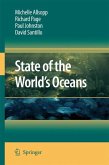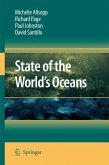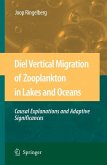Biological invasions are considered to be one of the greatest threats to the integrity of most ecosystems on earth. This volume explores the current state of marine bioinvasions, which have been growing at an exponential rate over recent decades. Focusing on the ecological aspects of biological invasions, it elucidates the different stages of an invasion process, starting with uptake and transport, through inoculation, establishment and finally integration into new ecosystems. Basic ecological concepts - all in the context of bioinvasions - are covered, such as propagule pressure, species interactions, phenotypic plasticity, and the importance of biodiversity. The authors approach bioinvasions as hazards to the integrity of natural communities, but also as a tool for better understanding fundamental ecological processes. Important aspects of managing marine bioinvasions are also discussed, as are many informative case studies from around the world.
Hinweis: Dieser Artikel kann nur an eine deutsche Lieferadresse ausgeliefert werden.
Hinweis: Dieser Artikel kann nur an eine deutsche Lieferadresse ausgeliefert werden.
From the reviews: "The editors have comprehensively enrolled leading researchers in the writing of reviews of the prolific recent literature on invasive species in the coastal seas. ... The chapters, which are aimed at the research community, provide a plethora of surprising and interesting details of species after species, how they may have arrived, what helped invasions, and some consequences. ... This readable and accessible volume ... will serve as a good base of information in the field. Summing Up: Recommended. Upper-division undergraduate, graduate, research, and professional collections." (I. Valiela, Choice, Vol. 46 (11), July, 2009) "Gil Rilov and Jeffrey Crooks edited this book about invasive species in marine ecosystems. ... Its overall quality is high. It includes a number of interesting chapters ... . the book is of interest not only to marine ecologists but to all ecologists who work on invasive species. The book is well written throughout. It has ... colour pictures and two indices: a subject index and a taxonomic index. ... your library can get a copy of it." (Jonathan M. Jeschke, Basic and Applied Ecology, Vol. 10, 2009)








